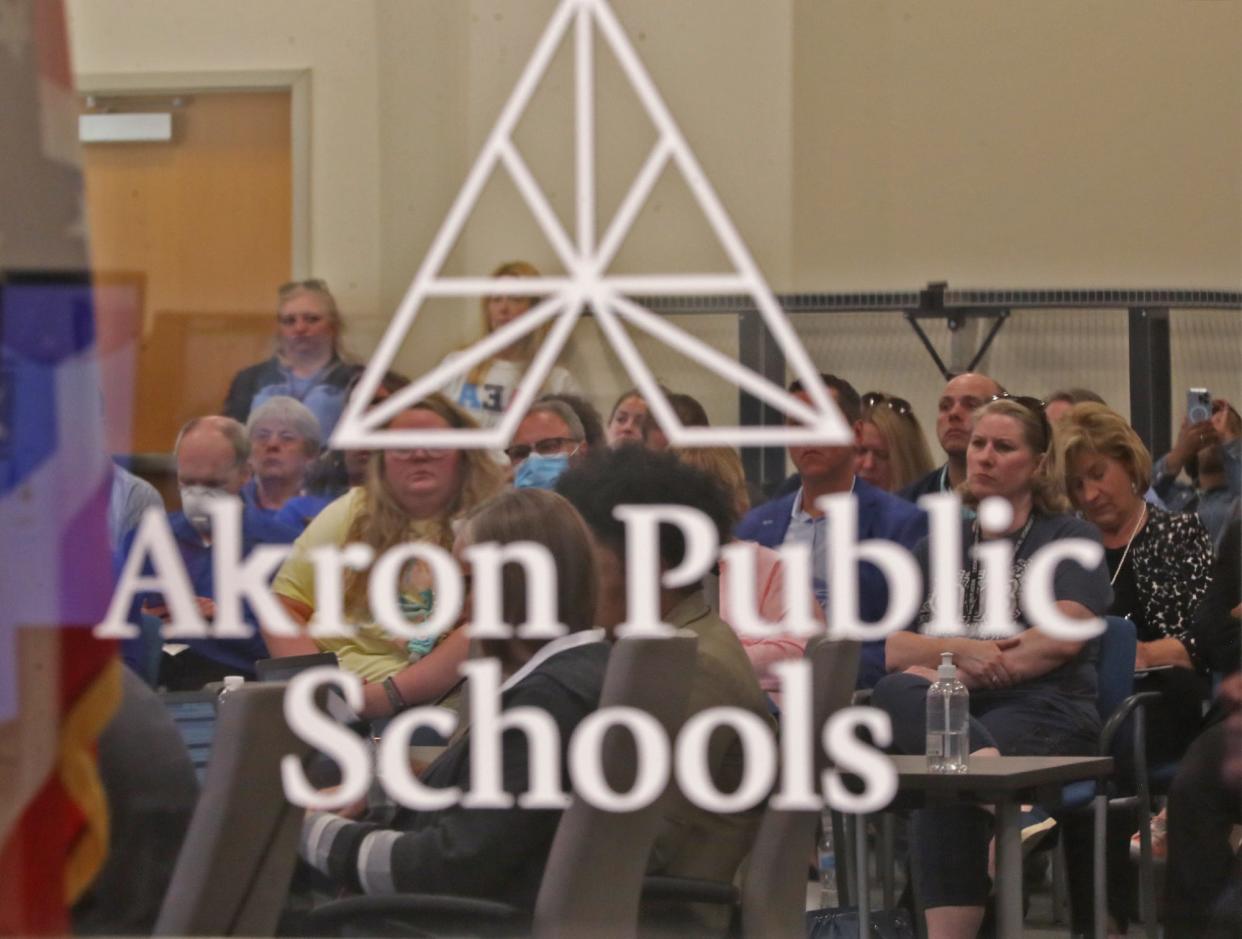'Contact' or 'injury.' Definition of assault a key dispute in APS talks with teachers

Teachers and administrators negotiating a new three-year labor contract in Akron Public Schools are digging in on school safety and student discipline, apparently agreeing only on how critical the issue is to reaching an agreement.
Many of the facts and definitions are in dispute as the two sides come together again to bargain next month with a federal mediator.
“We firmly believe our dedicated teachers share our goal of providing a safe environment for them to teach and for our students to learn,” Superintendent Christine Fowler Mack said in an emailed statement to the Beacon Journal in which she called student behavior “a principal element in contract talks.”
APS contract: Here are the major issues beyond discipline between Akron, teachers
“To that end, we are fully committed to the negotiation process that, when approached in good faith, can and will result in a contract that is fair to our educators and that puts kids first,” she said.
Don Malarcik, an attorney representing the 2,400-member Akron Education Association at the bargaining table, said school safety driven by a rise in assaults on teachers has long been a top concern. Before negotiations began this spring, more members cited student discipline and staff safety than any other topic covered in the contract talks.
Educators, including some who serve on the district’s Expulsion Review Committee, tell Malarcik they haven’t seen a student expelled for assaulting a teacher in 10 years, even a student who punched a teacher in the face in 2018.
Support local journalism. Subscribe to the beaconjournal today to access all of our content online at cm.beaconjournal.com/specialoffer.
Battle of assault definitions
The union’s rejection of a fact-finder's report Nov. 20 hinged on the administration’s attempt to redefine assault, Malarcik and union leaders said.
The administration sought to replace “contact” with “injury” as a way to determine physical assault.
The issue was one of nearly 20 the two sides could not settle before calling in the fact-finder.
“Physical contact can be intentional or unintentional as in a student accidentally bumping into a teacher,” the fact-finder wrote in a report released by the district to the Beacon Journal. “Assault, however, by its nature and definition is an intentional act that places an individual in reasonable apprehension of bodily harm. The term ‘contact’ is vague and ambiguous; physical injury is more explicit.”
APS:District more aggressively suspends students than most Ohio urban districts, data shows
The fact-finder also wrote that current contract language around the “potential” to do harm was “a very subjective term.”
“Any action by anyone could have the potential to do harm,” the fact-finder concluded. “The stakes are very high for students who are charged with assault since a recommendation for expulsion is made. The definition, therefore, needs to be clear.”
Both sides have cited the ambiguity of the terms.
“My concern as an attorney is in the interpretation of the word 'injury,'" Malarcik said. "Does that mean someone has to be hospitalized? Does it mean a teacher has to be miss work? Do they have to go to the hospital and get a doctor's appointment? Is there a broken bone? Bleeding, bruising? What is the definition of injury?
“We are opposed to any language that would water down the definition of assault,” he said.
How often do assaults happen?
In student disciplinary logs, a physical assault on a staff member is coded as a “304.” These cases, according to the current collective bargaining agreement, require principals to notify police and students to be recommended for expulsion.
According to a school counselor who provided information to Malarcik, there have been 60 physical assaults against staff so far this year.
Administrators note that 25% of these cases involve kindergarteners. The union’s research says only 11 cases (18%) involved a kindergartener assaulting a staff member. More often, by the union's count, it’s middle schoolers. Grades 6-8 accounted for nearly half (27) of the 60 cases to date. Only nine cases involved high school students, according to the school counselor.
The counselor, a union official, gathered the data from hearing officers' summaries.
Fowler Mack declined an interview. The fact-finder found that her administration's desire to shift the burden of proof on physical assaults from contact to injury “still protects teachers’ safety but eliminates unnecessary exclusion of students from the educational process.”
Malarick said the district is “gaslighting parents” and forgetting “the victims behind each” case. The union, he said, sees the administration intentionally downplaying their concerns by saying a teacher would call physical assault for a student “brushing up against them in the hallway.”
“There's not a teacher alive that would ever report that ... (in) Akron Public Schools,” Malarcik said. “It doesn't happen. ... And it's disrespectful for the board to suggest that that's happening.”
Disciplinary hearings
With Ohio schools expelling fewer students these days, disciplinary hearings and out-of-school suspensions give an indication of the level and response to the most egregious student behavior.
In the first quarter of this year, the district is reporting that administrators referred 20 students to disciplinary hearings for bringing weapons to school, compared to 15 last year. In all, there have been 249 disciplinary hearing outcomes.
The hearings can result in expulsion, building transfers, placement in behavioral intervention programs or students returning to the school where the incident happened. In 45% of cases (112) so far this year, students have returned to their home schools while 26% (65) were sent to another APS building, 2% were expelled and the rest were placed at least temporarily in an alternative program.
While the number of students receiving out-of-school suspensions is up about 1% compared to the first quarter of last year, the length of the average suspension is up about 19%.
Reach reporter Doug Livingston at dlivingston@thebeaconjournal.com or 330-996-3792.
This article originally appeared on Akron Beacon Journal: APS seeks new 'injury' definition for teacher assaults in contract

